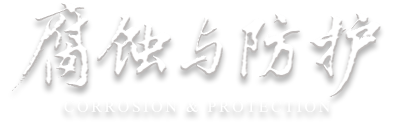基于有限元法的油气田集输管网阴极保护布局优化
Optimization of Cathodic Protection Layout of Oil and Gas Gathering Pipeline Network Based on Finite Element Method
-
摘要: 在利用有限元法建立外加电流阴极保护模型的基础上,借助Sobol灵敏度分析,确定了显著影响某油气田集输管网阴极保护效果的关键参数,并通过粒子群优化(PSO)算法对其系统布局进行优化。结果表明:由于外加电流阴极保护模型的模拟电位与测试桩的测定电位误差较小,故该模型能够较好地反映出油气田集输管网的电位分布现状;改变防护涂层电阻率等一阶敏感性系数较高的因素会对阴极保护效果产生较大影响,土壤电阻率、防护涂层电阻率以及管道埋深与其他参数之间可能存在明显交互作用;当利用PSO算法对油气田集输管网的阴极保护效果进行全局寻优时,该模型经过47 700次粒子进化迭代后的最佳阴极保护系统有效覆盖率高达99.14%,优化效果显著。Abstract: Based on the finite element method to establish an impressed current cathodic protection model, Sobol sensitivity analysis was adopted to determine the key parameters that could significantly affect the cathodic protection effect of a oil and gas gathering pipeline network. The layout of the cathodic protection system was also optimized through the particle swarm optimization (PSO) algorithm. The results show that since the error between simulated potential of the cathodic protection model of impressed current and measured potential of the test pile was small, the model could better reflect the current situation of potential distribution of oil and gas gathering pipeline network. Changing the resistivity of the protective coating and other factors with a higher first-order sensitivity coefficient would have a greater impact on the cathodic protection effect, and there might be obvious interactions between the soil resistivity, the protective coating resistivity, the buried depth of the pipeline and other parameters. When the PSO algorithm was used to optimize the overall cathodic protection effect of the oil and gas gathering pipeline network, the model had an effective coverage rate of 99.14% after 47 700 particle evolution iterations. The optimization effect was remarkable.

 下载:
下载: